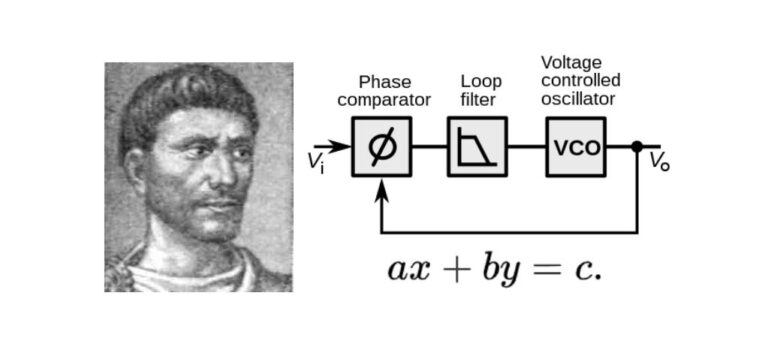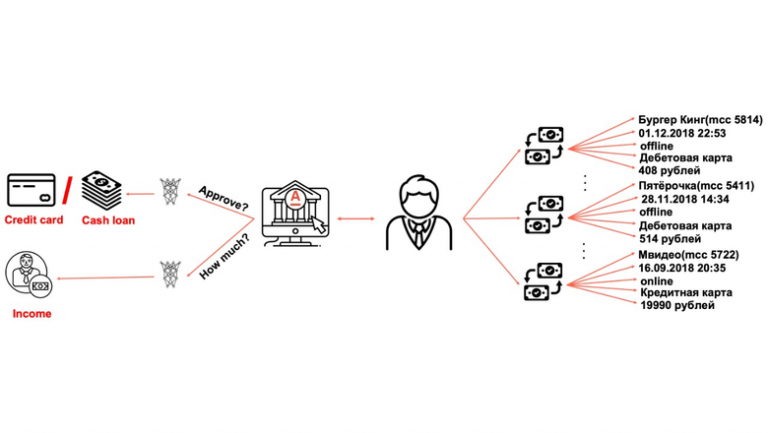Smart TV makers make more money from surveillance than from TVs themselves.
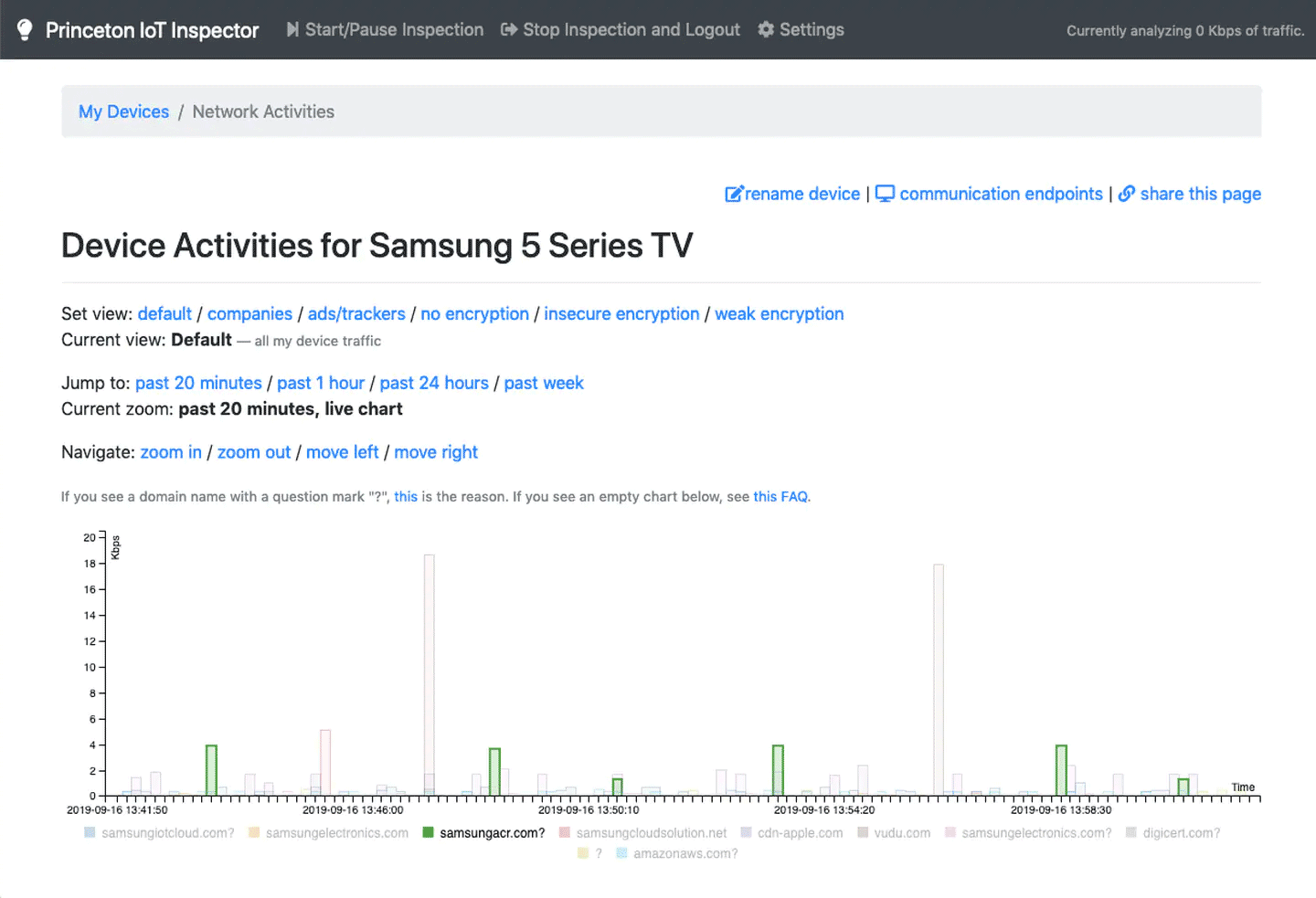
TV network activity in the program IoT Inspector… Screenshot: Geoffrey Fowler / The Washington Post
In 2019, we said that smart TVs Samsung, LG, Vizio and TCL take screen prints every second and send them to the server. This is the main reason why TVs have dropped so much lately. Smart TV is cheaperthan the same TV without Smart TV function. Manufacturers have found a new way to monetize.
Unfortunately, now the situation has only worsened: in 2021, for some TV manufacturers, surveillance of users has become not additional, but the main source of income.
Today TV manufacturers are deeply involved in the content, advertising, marketing, data mining, and user data trading industries. In terms of the amount of data collected, these platforms are catching up with Google and Apple.
The average American spends 3.5 hours a day in front of the TV. TV viewing history does not contain sensitive search queries or financial data, but allows for a detailed consumer profile.
And manufacturers are taking advantage of this opportunity, because from a legal point of view, tens of millions of TV buyers have given their permission to collect this data without removing the check mark from the corresponding menu items during installation.

The Vizio TV notifies when screen prints are taken and information is sent to the server. The “Accept” button is highlighted in advance. About 90% of TV buyers leave this answer, source
“Consent” of users is obtained by the usual methods, lulling the user’s attention and pushing him to choose the “correct” items. For example, on some TVs, the ACR permission is hidden in the Terms and Conditions menu. The option “I agree to everything” is also preselected and it is not even immediately clear that you can opt out of ACR.
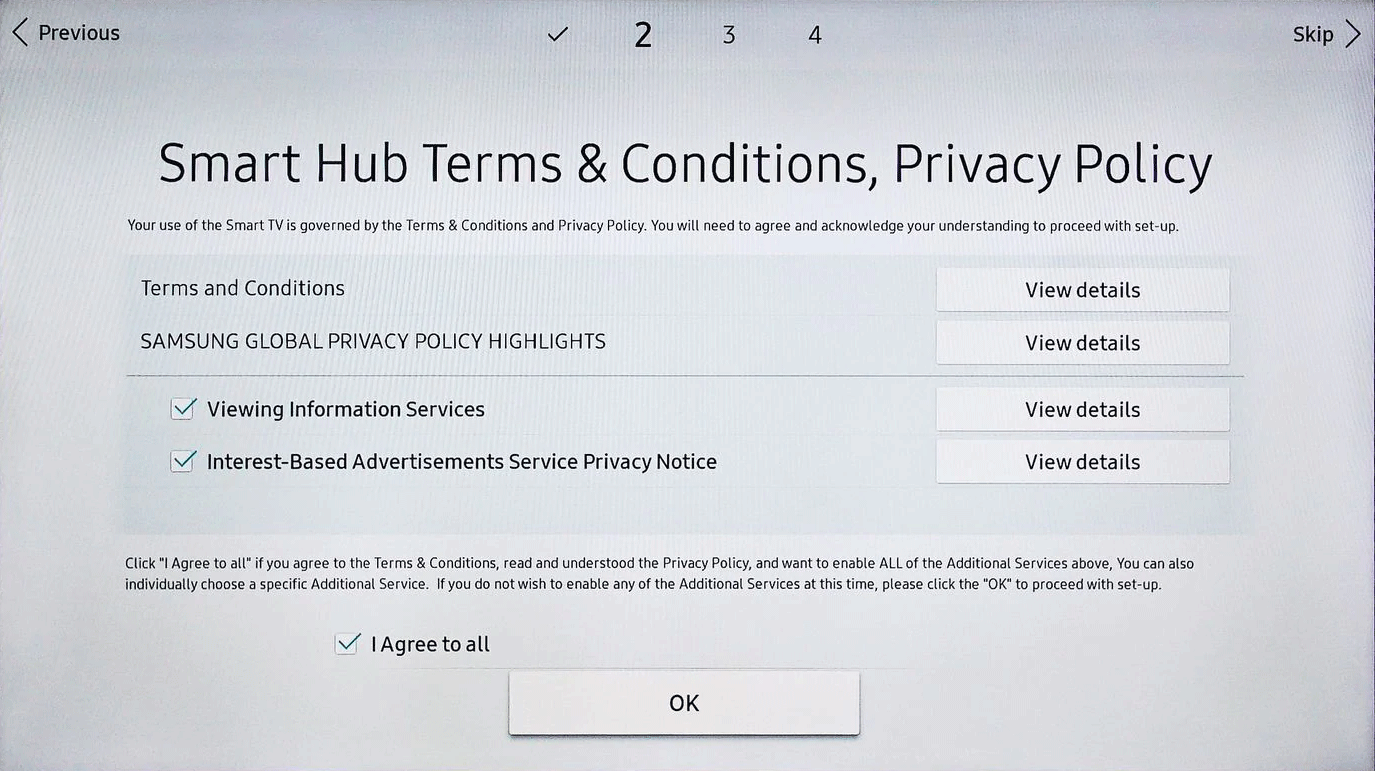
Regulators periodically fines TV producers for incorrect tracking of users, so that you have to change the scheme to obtain consent, etc.
The program was used to check the TVs
that shows traffic from IoT devices. As it turns out, TVs record and send screen content to the server, regardless of the signal source, be it cable TV, an app, a DVD player, or streaming. On servers running
automatic content recognition system
(automatic content recognition, ACR).
Once a second, the TV takes a “fingerprint” of the screen. It looks like two dozen square fragments of pixels scattered across the screen, which the TV converts into a string of numbers. The TV transmits this string to the server along with the TV ID. The fingerprint is compared with a database of known content, the algorithm works like the Shazam audio application. As a result, a per-second log of the user’s viewing of various content on TV is compiled. Ready-made profiles are sold to dozens of clients.
From the point of view of advertisers, the use of TV fills the gaps in user tracking, since they already have data from computers and smartphones, only the TV picture is missing. That is, it is valuable information for marketers that they are willing to pay for.
Previously, we could only theoretically talk about the high profitability of such a business model for TV manufacturers, but now there are numbers that confirm this thesis.
Financial statements Vizio for II quarter. 2021 shows amazing numbers. Thus, the division of advertising and user profiling (Platform +) for the quarter made a profit of $ 57.3 million, while the division for the sale of equipment (Device) earned $ 25.6 million.
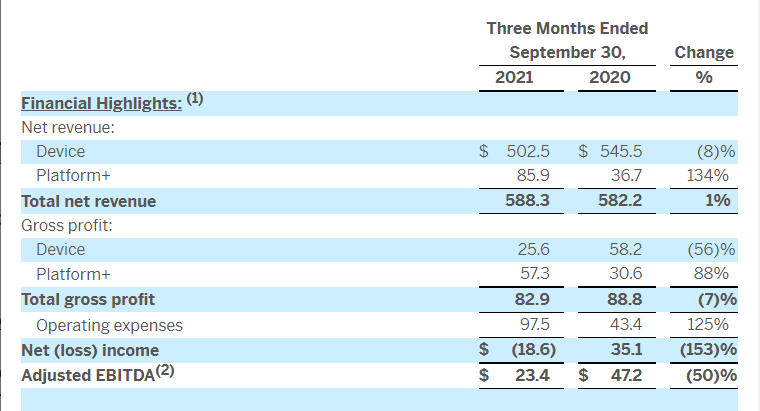
As you can see, the main source of profit has changed precisely in 2021.
A similar business model began to work for other TV and set-top box manufacturers such as Roku. speaks directly director of the company.
Unfortunately, lately more and more “smart devices” have set themselves the goal of collecting tracking of user activity – for the purpose of profiling, data mining and data sale. This is generally a growing trend in the market where remote work is gaining popularity. For example, the latest versions of the Office 365 office suite with the function
provide the employer with all the possibilities for remote monitoring of employee activity.

The tool collects data on the behavior of each user of the package by 73 indicators: whether the employee regularly turns on the camera during meetings, how often he sends emails, how many characters @ they contain how often an employee adds comments to shared documents and group chats, how many days they have used Word, Excel, Teams, Outlook and Skype in the last month, and more.
If this goes on, then TVs can become generally free in exchange for viewing ads and personal data on activity.
You can imagine a customer walking into an electronics store, picking up a free TV, and signing an agreement:
“I undertake to send the manufacturer statistics on my activity every second, and also to view at least XX minutes of advertising per day” [прим.: количество минут рекламы в сутки зависит от тарифного плана и социального рейтинга пользователя]
Although these points may not be included in the agreement, because there will be no choice. A smart TV will simply refuse to work without updating to the current firmware and meeting the established requirements.
Happy International Information Security Day!
Celebrate your holiday with GlobalSign!
Until December 6, 15% discount on TLS / SSL, digital signatures, code signing, email security certificates
… More details:
https://www.globalsign.com/ru-ru/lp/cybersecurity-day
